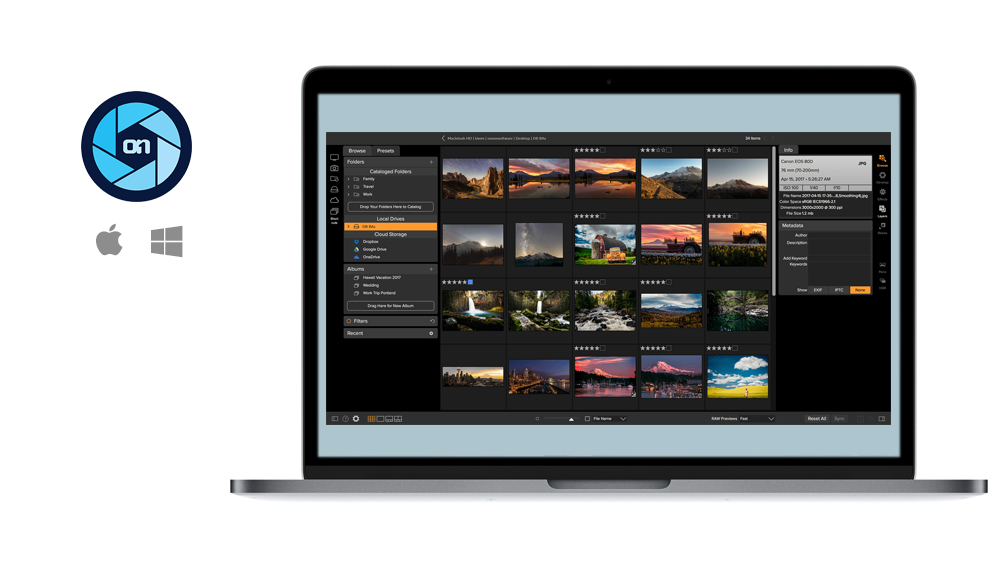

The disadvantage is that full-time live view draws more power, with mirrorless cameras notorious for being battery hungry. The advantage of purely electronic viewing is that the image you are previewing matches the image you’ll capture, at least for short exposures. While you can look through and frame using the EVF as you would with a DSLR, you are looking at an electronic image from the sensor, not an optical image from the lens. In a mirrorless, the camera remains in “live view” all the time, with the sensor always feeding a live image to either or both the rear LCD screen and electronic viewfinder (EVF). The Sony a7III’s excellent Live View screen display. In the meantime, Sony commands the full-frame mirrorless market.Īs its name implies, a mirrorless camera lacks the reflex mirror of a digital single lens reflex camera that, in a DSLR, provides the light path for framing the scene though the optical viewfinder.
ON1 PHOTO RAW A7III SERIES
The Sony a7III with the compact but fast Laowa Venus Optics 15mm f/2 lens.Īs with Sony’s other popular Alpha 7 and 9 series cameras, the new Alpha 7III is a full-frame mirrorless camera, a class of camera Canon and Nikon have yet to offer, though models are rumoured or promised.
ON1 PHOTO RAW A7III ISO
All with the Laowa 15mm lens and Sony a7III at ISO 3200.
ON1 PHOTO RAW A7III PLUS
MILKY WAY AT DINOSAUR PARK A stack of 2 x 90-second exposures for the ground, to smooth noise, and at f/2.8 for better depth of field, plus a single 30-second untracked exposure at f/2 for the sky. NOTE: Click or Tap on most images to bring them up full-frame for inspection. I did this testing in preparation for the new third edition of my Nightscapes and Time-Lapse eBook, which includes information on Sony mirrorless cameras, as well as many, many other updates and additions!

It was not supplied to me by Sony in return for an “influential” blog post. In my testing I compared the Sony a7III to two competitive DSLRs, the Canon 6D MkII and Nikon D750.Īll three are “entry-level” full-frame cameras, with 24 to 26 megapixels and in a similar price league of $1,500 (Nikon) to 2,000 (Sony). Indeed, the ease of manually focusing in Live View is a key function.

Most tests focus on its superb auto exposure and auto focus capabilities that rival much more costly cameras, including Sony’s own a7rIII and a9.įor astrophotography, none of those auto functions are of any value. Sony’s a7III camera has enjoyed rave reviews since its introduction earlier in 2018. I put the new Sony a7III mirrorless camera through its paces for the features and functions we need to shoot the night sky.


 0 kommentar(er)
0 kommentar(er)
